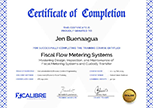| Date | Venue | Fee | |
|---|---|---|---|
| 24 Nov - 28 Nov 2025 | Paris - France | $ 5,950 | Register Now |
| 15 Dec - 19 Dec 2025 | Dubai – UAE | $ 4,950 | Register Now |
| 27 Jul - 31 Jul 2026 | Los Angeles - USA | $ 6,950 | Register Now |
| 05 Oct - 09 Oct 2026 | Dubai – UAE | $ 5,950 | Register Now |
| 23 Nov - 27 Nov 2026 | Paris - France | $ 5,950 | Register Now |
| 14 Dec - 18 Dec 2026 | Dubai – UAE | $ 5,950 | Register Now |
About the Course
As the global energy landscape evolves, transmission and distribution systems play a crucial role in ensuring that power reaches consumers efficiently and sustainably. Implementing effective pricing strategies for transmission and distribution systems has become increasingly important in maintaining grid stability, fostering market competition, and meeting regulatory requirements. With the growing need for renewable energy integration, grid modernisation, and technological advancements, the energy sector must adapt its pricing models to meet current and future challenges.
This 5-day interactive Transmission and Distribution Pricing Strategies training course is designed to provide professionals with an in-depth understanding of the principles and practices behind transmission and distribution pricing strategies. Delegates will gain insights into the economic and regulatory frameworks that shape pricing decisions, helping them to make informed choices and optimise pricing structures for long-term system sustainability. As the energy industry continues to move towards a decentralised model with increased reliance on renewables, understanding these pricing mechanisms becomes essential to managing operational costs, encouraging innovation, and attracting investments.
It will equip delegates with the skills to evaluate existing pricing models and develop tailored strategies to address the complexities of modern energy markets. By focusing on the key drivers of transmission and distribution pricing, aiming to enhance delegates' ability to navigate the challenges associated with grid modernisation, fluctuating demand, and regulatory changes. Ultimately, it will empower energy professionals to create pricing frameworks that support a more resilient, efficient, and economically viable energy system.
Core Objectives
The delegates will achieve the following objectives:
- Understand the key components of transmission and distribution pricing structures and their role in the energy market
- Explain the various pricing models and their application in different market conditions and regions
- Implement best practices for pricing strategies in the context of grid resilience and infrastructure upgrades
- Assess the impact of regulatory frameworks and compliance on pricing mechanisms in energy distribution
- Evaluate the effectiveness of different pricing models in balancing consumer needs, operational costs, and market efficiency
- Develop customised pricing strategies that address stakeholder concerns, technological advancements, and market changes
- Present pricing strategies and their financial, regulatory, and operational implications to various stakeholders, including regulators, consumers, and utility providers
Training Approach
This training course combines theoretical insights with practical applications to ensure a deep understanding of pricing mechanisms. Interactive discussions, group exercises, and scenario-based activities will enable delegates to analyse and apply pricing strategies in real-world contexts. Additionally, expert-led sessions will focus on regulatory challenges, helping them evaluate and adapt pricing models in a dynamic energy market.
The Attendees
This training course is designed for professionals who play a critical role in shaping, managing, and analysing the pricing strategies for transmission and distribution systems.
It will be beneficial to professionals in, but not limited to, the following fields:
- Energy Policy Makers
- Transmission and Distribution Network Operators
- Utility Regulators
- Energy Project Managers
- Corporate Strategy and Planning Teams
- Energy Market Analysts
- Power System Planners
- Independent Power Producers (IPPs)
- Financial Analysts in the Energy Sector
- Engineers and Technical Specialists in Power Systems
Daily Discussion
DAY ONE: UNDERSTANDING TRANSMISSION AND DISTRIBUTION PRICING STRATEGIES
- Overview of Transmission and Distribution Pricing Structures
- The Role of Transmission and Distribution in the Energy Market
- Key Components of Electricity Pricing: Generation, Transmission, and Distribution
- Types of Pricing Mechanisms in the Energy Sector
- Understanding the Regulatory Framework Governing Pricing
- Stakeholders in Transmission and Distribution Pricing
DAY TWO: PRICING MODELS AND MARKET MECHANISMS
- Overview of Pricing Models for Transmission and Distribution
- Time-of-Use Pricing and its Impact on Consumer Behaviour
- Real-Time Pricing and Market Signals
- Market-Based Pricing Strategies: Auctions and Competitive Bidding
- Cross-Subsidisation in Pricing and its Regulatory Implications
- Dynamic Pricing Models: The Demand Response and Grid Optimisation
DAY THREE: REGULATORY OVERSIGHT AND COMPLIANCE
- Understanding Regulatory Oversight in Transmission and Distribution Pricing
- Key Regulatory Bodies and Their Role in Pricing
- Tariff Setting and Rate Reviews by Regulators
- Compliance with National and International Standards
- Regulatory Challenges in Pricing Strategies
- Impact of Energy Transition Policies on Pricing Models
DAY FOUR: INTEGRATING TECHNOLOGY AND GRID RESILIENCE
- Advanced Metering Infrastructure in Pricing Strategies
- Smart Grid Technologies and Their Influence on Pricing
- Pricing Models for Decentralised Energy Systems: Solar, Storage, and DERs
- Pricing for Grid Resilience and Equity in Energy Distribution
- Distributed Energy Resources and the Evolution of Pricing Strategies
- Technological Innovations Impacting Pricing Strategy Design
DAY FIVE: COST ALLOCATION AND STAKEHOLDER ENGAGEMENT
- Cost Allocation Methods in Transmission and Distribution Pricing
- Pricing for Infrastructure Investments and System Upgrades
- Developing Equitable Pricing Models for Different Consumer Segments
- Engaging Stakeholders in the Pricing Process
- Tariff Design: Balancing Consumer Affordability and Operational Costs
- Evaluating the Effectiveness of Pricing Strategies for Long-Term Sustainability
Certificate Awarded
Upon successful completion of this training course, participants will be awarded a Certificate of Completion from XCalibre Training Centre, acknowledging their accomplishment. This certificate serves as a testament to their dedication to developing their skills and advancing their expertise in their respective fields.


